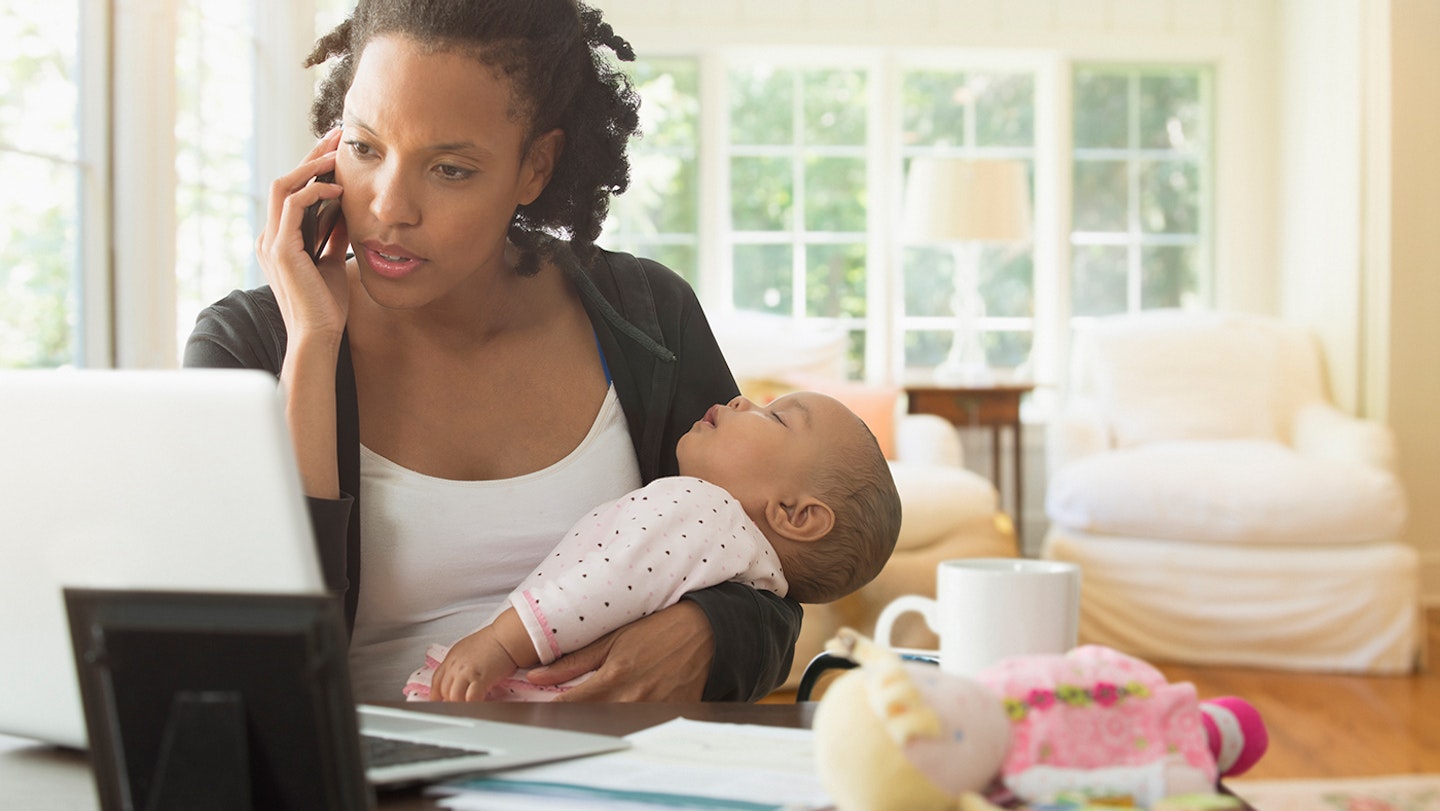Going on maternity leave is usually an exciting and nerve-wracking time as a parent. You'll soon meet your precious baby and everything as you know it will look a little different.
While work and your job may be the furthest thing from your mind at this point, unfortunately, a common issue faced by employees on maternity leave is their role being placed at risk of redundancy either during their leave or on their return to work.
However, from early April 2024, the law changed to give additional protection to employees in this situation. Scroll down to find out more.
The history of redundancy for mothers
Understandably, you may not have given the prospect of redundancy on maternity leave much thought until now. But it can be useful to understand more about the reality for some mothers.
In 2017, Maternity Action, the UK’s leading charity committed to ending inequality and improving the health and well-being of pregnant women, their partners and children released a report which delved into unfair redundancies during pregnancy, maternity leave and return to work.
In this report, Maternity Action shared research from Equality and Human Rights Commission released in 2016, which found that "77% of pregnant women and new mothers had experienced discrimination or negative experiences during pregnancy, maternity and on their return from maternity leave." If scaled up to the general population, this could mean as many as 390,000 mothers a year.
In further research from EHRC in May 2018, "around one in nine mothers (11%) reported that they were either dismissed; made compulsorily redundant, where others in their workplace were not; or treated so poorly they felt they had to leave their job."
Although many of these stats are from a few years ago, they give you a good idea of what many experience and the need for further protection for working parents.
Can you be made redundant on maternity leave?
We spoke to Tabytha Cunningham, a partner in the employment team at Paris Smith, to find out more about the new law and everything you need to know about it.
What are the new protections for employees in redundancy situations?
The new rules that have been introduced are under a piece of legislation called the Protection from Redundancy (Pregnancy and Family Leave) Act. Essentially this is designed to extend the existing redundancy protections currently in place for employees during their maternity, adoption or shared parental leave, so that these apply for longer.
What were the rules?
Previously employees who were on maternity, adoption or shared parental leave already had additional protection if they faced a redundancy situation while they were still on leave.
Although employees could still be placed at risk of redundancy, there was still special protection that meant if they were selected for redundancy, any employees on maternity or similar leave were entitled to be offered any suitable alternative vacancies in priority to other employees.
This means for example if five employees have been selected for redundancy following a selection process, and the employer has one vacancy for a similar role at the same level in another area, if one of the five employees is on maternity leave, they would need to be legally offered the remaining vacancy first.

What has changed?
What’s changed is the length of this protection. Previously, this special protection only applied whilst the employee was on maternity, adoption or shared parental leave – and stopped as soon as they returned to work. It also didn't apply if your role was at risk when you were pregnant but had not yet started your maternity leave.
Now the new rules have come in, this protection has been extended to apply:
-
From the time that an employee informs their employer they are pregnant
-
During their period of leave (as previously) and
-
For 18 months following the date of birth or date of adoption of the child
For most employees, if they choose to start their maternity leave on or around their due date, and take a full year of leave, this means the protection will last for about six months following their return to work.
There are specific rules as to when you gain this protection if you take a period of shared parental leave (the type of leave both parents can share between them if they choose to end the mother's maternity leave or adoption leave early and switch to this leave), which essentially provide that if you take six weeks consecutive leave or more you will also benefit from this protection for 18 months after the birth/adoption.
When does the change come into force?
The new rules came into effect from 6 April 2024. How this works in practice depends on the type of protection.
-
Where an employee is relying on the new protection that covers pregnancy, they will be covered if they notify their employer of their pregnancy on or after 6 April 2024.
-
Where an employee is relying on the new protection that applies after they return from leave, the new rules will apply to adoption or maternity leave ending on or after 6 April 2024 or any period of six weeks consecutive shared parental leave starting on or after 6 April 2024.
Can employees still be made redundant when they are pregnant or during or after maternity or similar leave?
Whilst the protection has increased, unfortunately, the new rules do not prevent employers from dismissing an employee whilst they are pregnant or during or following maternity leave or another period of leave.
The special protection that applies doesn’t prevent an employer from placing an employee in this situation at risk of redundancy. It also doesn’t prevent them from selecting that employee for redundancy, provided they follow a fair selection process.
It focuses only on looking to minimise redundancies by ensuring those employees get first priority over any vacancies that are identified by the employer.

What impact will this change have on employees?
The impact that this has in practice will vary significantly depending on the size of the employer. In a large employer, which has numerous vacancies in different areas and teams at a similar level, this protection could be extremely advantageous – meaning the employee gets first priority for these vacancies and is likely to be able to stay in employment. In a smaller company that has very few vacancies and where these vacancies are unlikely to be suitable, this protection unfortunately makes little difference.
The impact also varies depending on the type of redundancy. The rules are complicated but in a restructure situation, where the employer is both reducing the number of roles and changing the nature of the remaining roles, this can be very advantageous. In this situation, it may be that all the roles are being removed, and all the new roles that will remain will legally need to be treated as suitable alternative vacancies. An employee that falls within this protection in this situation will therefore have first priority for those remaining roles.
What other protection is available to employees?
It's important to remember that in addition to these rules, employers must also be careful not to discriminate against employees because they are pregnant, on leave or recently returning from leave.
If, for example, an employee was chosen for redundancy because they are pregnant, this would be direct discrimination and is unlawful.
Equally, if an employee was placed at a disadvantage in a redundancy situation because they have been on maternity leave, for example, because this affected their sales figures which are taken into account in the scoring process, this could be indirect discrimination which is also unlawful.
Employers must therefore carefully consider their redundancy processes to ensure that employees are not directly or indirectly placed at a disadvantage throughout.
Where an employee is on a period of leave during a consultation process employers should also take reasonable steps to ensure that they can still participate in the process effectively, for example arranging for meetings to take place by video call or telephone and allowing more time to respond.

What should I do if I feel I am being made unfairly redundant?
If you are concerned that you have been placed at risk of redundancy unfairly or are at a disadvantage in the selection process because of your pregnancy or current or recent maternity leave, it’s important that you raise this with your employer. You should have the opportunity to raise these concerns within the consultation process. If your concerns relate to a vacancy that you believe should be offered to you in priority to others, you should explain why you believe you fall within this protection and confirm that you want to be considered for the role.
If your employer fails to address your concerns during the consultation process and you are subsequently dismissed for redundancy, you should be provided the right to appeal. It’s important that you take up your right to appeal and put forward your concerns in writing.
If your employer fails to address the issue, you could consider bringing a claim for unfair dismissal and discrimination. You have three months from the last day of your employment to bring a claim for unfair dismissal and the same period from any act of discrimination to bring a claim for discrimination so you should seek advice promptly to make sure you bring any claim in time.

Getting support
There are a number of resources available that can offer you advice and support such as Maternity Action and Pregnant Then Screwed.
Overall this change is a positive step forward for working parents and families. It is hoped that they will also help to reduce some of the disadvantages and unfair treatment that those in these situations often face in the workplace and will help reduce discrimination in these areas.
A journalist since 2015, Emily Gilbert is the Features & Reviews Editor for Mother&Baby and has written for the website and previously the magazine for seven years. Emily writes about everything from the top baby products to pregnancy, fertility and maternal mental health. Specialising in product reviews, Emily is the first to know about all the exciting new releases in the parenting industry.
About the expert
Tabytha Cunningham is a Partner in the employment team at Paris Smith. She provides advice to clients on a wide range of HR and employment-related matters, including flexible working requests, family-friendly rights, discrimination issues and grievances. She also represents employees and employers in Employment Tribunal claims.
